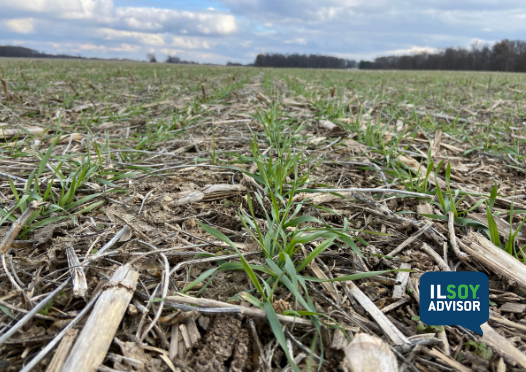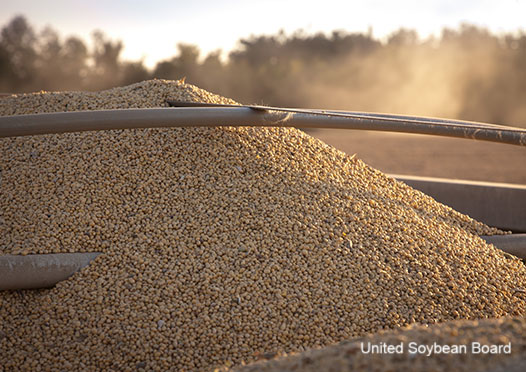ILSOYADVISOR POST
10% Cover Crop Challenges
This article was originally published on Wallaces Farmer.
There is no magic recipe for your cash crops. They require trial, error and a great deal of attention.
Cover crops are the same way! There is not a prescription.
But once you understand the guiding principles and strategic mindset for your cover cropping plan, you’ll achieve much greater success!
Our 10% challenge is for:
- farmers trying cover crops for the first time.
- farmers looking to take their cover crops to the next level.
- consultants, trainers or educators seeking a specific plan for their clients.
Mindset Matters
Treat your cover crops like your cash crops™. It is absolutely PARAMOUNT to have this mindset for success! Think about EVERYTHING you do to prioritize your cash crops: planted on time, proper seeding equipment, and the consistent observation that you do throughout the growing season.
Cash cropping knowledge has been distilled over generations. Cover crop management is brand new for many, so grasping the proper perspective is essential. You are NOT yet a cover crop farmer when you buy a bag of cover crop seed! You need to have an “all-in” attitude. A casual application is doomed to fail.
Prepare to Fall Short (at least a little)
In all candor, recognize that just as cash crops occasionally do not meet expectations, so also cover crops may not perform to your goals in some years. Cover crop management needs to be thought of in the context of a 10-year plan. This is an investment. You are building long-term value into your soil.
Now, with the most important part laid out, are you ready to commit to the following 10 strategies for increasing your cover cropping acres by 10%?
10 Strategies to Increase your Cover Crops by 10%
1. Determine the objectives you are trying to accomplish by planting cover crops.
2. Define your planting window. What can you do to create a wider planting window? (Interseeding, short season corn, or other?) Which species can be planted in your cover cropping window? Check with experienced local university extension/ NRCS, or SUCCESSFUL cover cropping farmers in your area. Refer to Cover Crop Coaching Decision Guide available with your membership
3. Check with NRCS offices for CSP, EQIP or other cover crop programs that you’d like to use. Most of these programs require sign-up months in advance.
4. Develop a cover crop establishment plan. Drill and precision planting has the most consistent success. Aerial and broadcast can work if weather cooperates.
5. Consider adjusting your herbicide program to accommodate cover crops. Refer to or Google: Penn State University Corn Herbicides and Rotation to Cover Crops CCI members: See CCI webinar, “What you need to know to Manage Herbicides when Planting Cover Crops”
6. Ensure a proper setup on cash crop planter when planting into cover crop residue. Can your planter handle cover crop residue? If planting green, is your planter set up correctly? CCI members: See CCI webinar, “5 Common Mistakes to Avoid when Planting Green into Cereal Rye”
7. Set up a cash crop fertility plan. For nitrogen-loving cash crops like corn, planted after cover crop grasses like cereal rye or annual ryegrass, you will need sufficient nitrogen on or very near the seed at planting. Legume cover crops can allow lower rates of nitrogen in corn but be cautious in adjusting fertility too quickly. Doing your own research in fertility rates is ideal and not hard to do with a little time and effort.
8. Set up a management/scouting plan. As with any new practice, intentional scouting is critical. It’s the best way to learn and tweak strategies for the years to come. Use a narrow shovel to dig, observe and compare your soil characteristics where cover crops are planted vs. where they are not. Discuss your intentions with your crop scout or consultant. If they do not value the use of cover crops or do not demonstrate a commitment to your increased cover crop acres, you will have to make a decision on the role they play in your operation. Join Cover Crop Innovators to be able to ask questions to experienced cover croppers throughout the growing season!
9. Set up a termination plan: Do you understand how to control the species you planted? Some require special attention. Ask local chemical rep or farmer who is experienced with terminating cover crops. Annual ryegrass requires special attention. What is your Plan B in case initial termination is not effective the first time? CCI members: See CCI webinar, “Controlling Annual Ryegrass” If termination is planned to be winterkilled, have a
backup plan in case of no winter kill. CCI members: See CCI webinar “7 Proven Strategies I’ve Learned after 21 Years of Rolling/Crimping Cover
Crops” Tillage: If tilling living cover crops in the spring, be sure to factor in the clumps of root mass that may not allow the soil to level out and be plantable as expected. Although moldboard plowing would eliminate this issue, there needs to be a VERY compelling reason to employ this soil destructive practice!
10. Become a student of cover cropping! We’ve made it VERY EASY by collecting the best cover cropping articles and listing them on our website blog for free! Bonus Tip! On leased land, have a conversation with the landowner explaining the added value you are creating for their investment. They may even offer to help you out with additional costs related to cover cropping!
Steve Groff and his family, farm 305 acres of cash grain crops, pumpkins and heirloom tomatoes in Lancaster County, Pennsylvania. For the past 22 years, his Cedar Meadow Farm has conducted thousands of cover crop research trials- out of which he developed the well-known Tillage Radish.
Steve is the founder of Cover Crop Coaching- a business that “trains the trainers” how to talk to farmers about effective cover crop use. He also recently launched Cover Crop Innovators, a subscription based membership group where Steve hosts a weekly live webinar and moderates a Facebook discussion group.
He is also a contributing columnist for the American Agriculturalist magazine and the Lancaster Farming- writing articles on the effective use of cover crops.




Comments
Add new comment